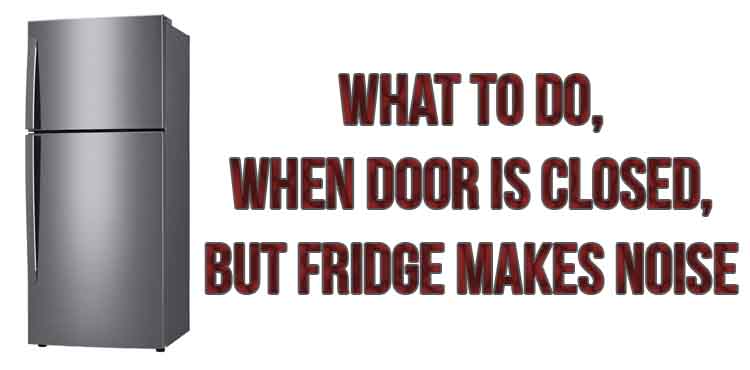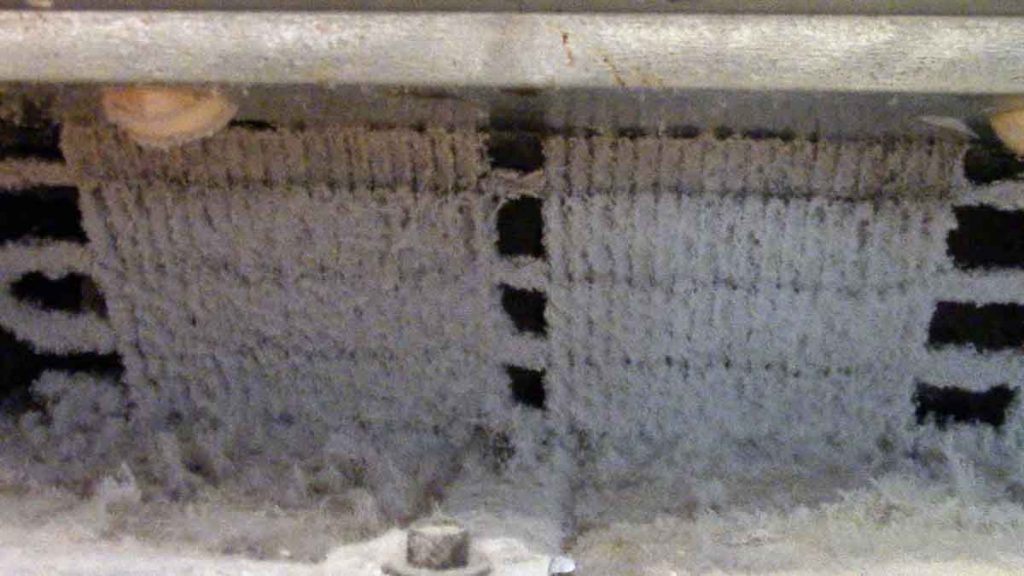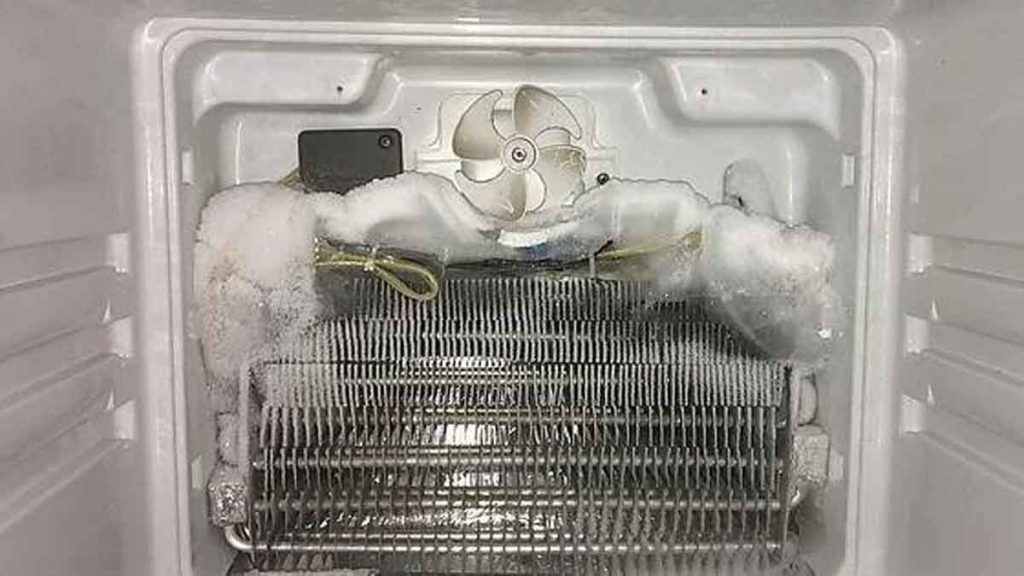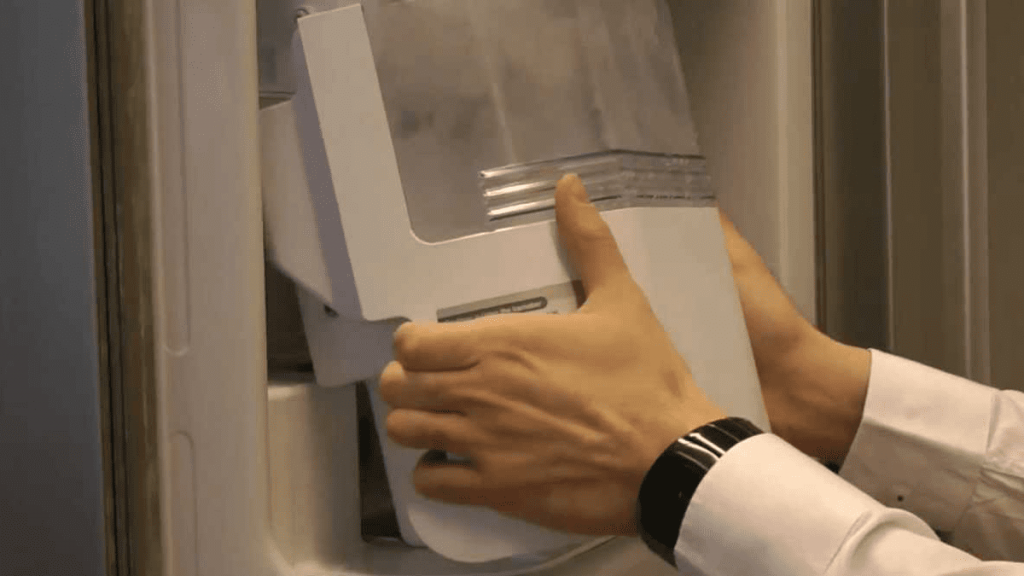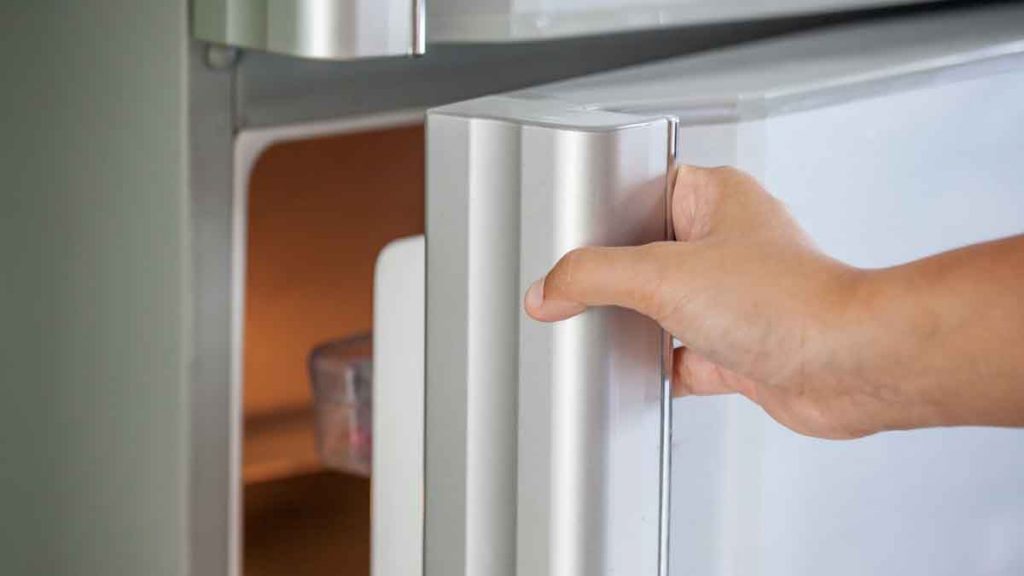If your refrigerator makes a lot of noise and interferes with sleep at night, you need to take action. First of all, pay attention to the nature of the sounds. From it you can understand where in the refrigerator to look for a problem.
Sometimes the noise appears for a while, then disappears. And some types of noise are natural, even if you haven’t heard them before.
Common Causes of Refrigerator Noises and How to Fix Them
Before you start looking for the cause of the noise, check if the refrigerator is level, if it is located at a sufficient distance from the wall, if there are any foreign objects behind it that could fall from above. Note that crackling sounds are normal. They appear as a result of the expansion and contraction of accessories inside the refrigerator.
Drain pan
You’re in luck if the sound is coming from below because it’s most often associated with an improperly installed drain pan. Check it, make sure that it is in the correct position and that its supports, on which it rests, are in good condition.
Dirty condenser fan
A sound that comes from the back of the refrigerator may indicate a problem with the condenser fan blades. Look in there, see if there is dirt, debris. Remove. The main thing – do not forget to disconnect the refrigerator from electricity.
Other problems that may indicate a fan blade problem include:
- The temperature in the refrigerator will be higher than usual, which will inevitably lead to accelerated spoilage of food.
- Refrigerator often turns off.
If these problems are present, be sure to inspect the fan and remove any obstruction to rotation. For this:
- Power off the refrigerator, open the door, remove the back panel to gain access to the fan. If you do not understand how to do this, look at the instructions on the Internet. As a rule, there is nothing complicated about this. It is necessary to unfasten the latches and pull out the panel. In some models of refrigerators, the fan is completely brought out and to get access to the blades you just need to unscrew the screws.
- Melt the ice on the blades, remove any debris that might interfere with rotation.
After that, collect everything back and check if the noise that brings you discomfort has disappeared. If there is ice, check the tightness of the door and try to open it less often. Its presence may also indicate a malfunction in the defrosting system.
Faulty evaporator fan
The evaporator fan has a rubber grommet that reduces vibration noise by isolating the mounting bracket from the motor. Over time, it wears out, which leads to the appearance of extraneous noise.
Check the reliability of the fastening of the sleeve, see what condition it is in. If there are defects, remove the old bushing and install a new one. To do this, turn off the power to the refrigerator, get to the evaporator fan, which is located inside the freezer, remove its cover and run diagnostics.
Evaporator fan covered with frost in Samsung or Whirlpool refrigerators.
If your Samsung or Whirlpool refrigerator rattles or crackles, and the noise disappears when you open the door, the defrost cycle is probably broken, causing a snow cap to form on the fan blades, and subsequently ice. The blades cling to it, causing an unpleasant noise.
If no action is taken, the evaporator fan will fail. But even replacing it will not solve the problem, so you need to look at all the elements of the system involved in the defrost cycle.
Faulty ice maker
If there is a loud hum in the refrigerator, check the ice maker. It could fill up with water. If hum and noise appear at regular intervals (15-20 minutes) with the water supply turned off, turn off the ice maker to avoid possible damage.
If the buzzing does not disappear even when the water line is turned off, check that the connection to the refrigerator is correct. If after all the steps taken the problem persists, reduce the water pressure.
Natural noises due to compression and expansion of details
If your refrigerator is making clicking, popping, crackling sounds, don’t worry. Such effects are typical for new refrigerators, especially during periods of planned shutdown and start-up, when the plastic elements located inside begin to shrink or expand.
Over time, these sounds disappear. The refrigerator adapts to the microclimate of the room.
If the crackle is too loud, it is not good. It is better to contact a specialist who will accurately identify the problem.
Problems with the doors and the microclimate inside the refrigerator
If the doors of the refrigerator are tightly closed, and a loud noise comes from it, the temperature inside the chambers is most likely not suitable. She’s above the norm. Some refrigerators notify the owner of the equipment with a sound signal.
The equipment emits a sound signal even when the refrigerator door is left ajar. At the same time, it may not be there if it is ajar quite a bit.
Extraneous noise can also be emitted by the doors themselves. If they are not installed correctly or their hinges are worn out, creaking sounds occur during operation of the equipment. Lubricate the hinges, adjust the doors, move the refrigerator back and forth, changing its position a little.
Ventilation holes
Ventilation openings should not be blocked by anything for unhindered air circulation. If there are any objects near the openings or the refrigerator is placed close to the wall, it will interfere with the air flow. The result will be a humming sound. Never put equipment close. Also leave space between the products placed in the chambers. This is directly written in the instructions. This has a beneficial effect on the cooling of products.
Faulty defrost timer
The defrost timer starts heating the heating element, after which any snow formations on the surface of the cooling tubes disappear. It also stops the compressor, which pumps air inside.
The defrost system is designed in such a way that all its components depend on each other. The timer works at regular intervals, because everything is so programmed at the factory.
If the defrost timer breaks, the heating element is not commanded. Snow builds up on the pipes and condenser. One day you can find a snow cap and a heating element with a fan that has grown into it. Manual or natural defrosting is required. Manual involves the use of a household hair dryer, natural – leaving the refrigerator de-energized and with the doors open for several hours.
Checking the defrost timer is easy. It is necessary to simulate its inclusion. To do this, you need to press the black button located on its body, then start the refrigerator and leave it for several hours, and then check whether something has changed or not. If there is a lot of snow inside again, then the timer needs to be replaced.
There is another option – to short the contacts. But it is better not to do this if there is no knowledge of electrics.
Noises during operation of the refrigerator, which are natural
Let’s see what noises in the refrigerator are natural and do not indicate any problems. We will also consider the procedure for reducing their intensity.
Cracking, clicking: natural for new refrigerators. You don’t need to do anything. Over time, the noise will decrease.
Whistling, howling – a consequence of air circulation. To reduce noise, move the refrigerator away from the walls.
Hissing: water drips onto the defrost heater and evaporates. Natural sound.
Gurgling: The refrigerant changes from a gaseous state to a liquid state and vice versa.
Knock: Ice falling from the icemaker onto the bucket.
Rattle accompanied by compressor shutdown. Normal sound that lasts about 10 seconds.
What to do if there is an unusual noise in the refrigerator
The refrigerator cannot run silently. Noises can change over time. If you didn’t notice them before, but now you hear them, it doesn’t mean anything. Perhaps you just weren’t listening. If the noises are unnatural, look inside, listen where they come from. Try to solve the problem on your own, but if there is no experience, contact the service center.
